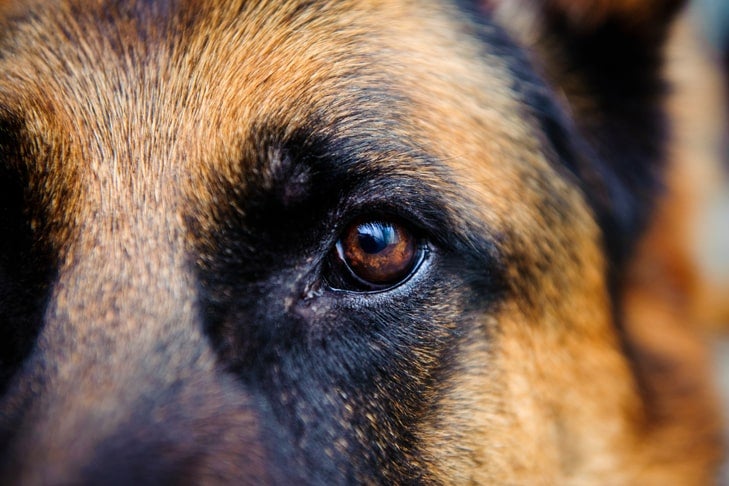Clubs Offering:
|
Have you ever felt your dog’s eyes following you, like they’re watching your every move? Maybe your dog stares at you while enjoying a chew toy or bone. Or, perhaps you enjoy sitting with your dog and gazing into each other’s eyes. Whatever the scenario, dogs spend a great deal of time staring at humans. And many dog owners spend a great deal of time wondering why.
Unfortunately, there is no simple one-stare-fits-all answer. Dogs have many reasons for turning their gaze on us. But most of the time they are either communicating with us or waiting for us to communicate with them. With a little knowledge and observation, you can learn to tell the difference. You can also teach your dog alternative ways to communicate that aren’t quite so puzzling as staring.
More than almost any other animal on earth, dogs are in tune with humans. They sense our moods, follow our pointing gestures, and read us for information about what’s going to happen next. That means they stare at us a lot to gain knowledge about their environment. Essentially, they are waiting for us to do something that will impact them. For example, dogs quickly learn that their owners pick up the leash before taking them on a walk. Therefore, they will watch for that signal that a trip outside is on its way. The same is true for mealtimes, play sessions, car rides, and so much more.
Dogs also wait for more deliberate cues from their owners. Cues to perform a specific behavior like sit or down are chances to earn a reward. Since dogs love getting a treat, toy, or game, they will keep an eye out for these opportunities. This is particularly true of dogs trained with positive reinforcement methods. These dogs learn to love training and wait eagerly for signs it’s time to play the training game.

Dogs Are Trying to Tell Us Something
Staring also occurs when your dog is trying to get your attention or tell you something. For example, if it’s time for a potty break, your dog might sit by the door and gawk at you. Or, if your dog is hungry and you’re eating, staring can indicate a desire for you to share your food. It’s the canine equivalent of a tap on the shoulder.
Some dogs stare to manipulate their owners and get something they want. This is a common scenario with begging at the dinner table. If the dog stares long enough, the owner will hand over a morsel of their meal. In truth, you have created that monster. In the beginning, the dog would have stared simply out of interest. If you ignored the gaze, your pup probably would have found something else to do. But the stare makes you feel uncomfortable or guilty, so you give in to make it stop. And there you have it- the dog has learned a new way to communicate.
If you become aware of your reaction to your dog’s staring behavior and eliminate any rewards, your dog will eventually try new behaviors to get your attention. A better approach is to teach your dog what you would like instead. For example, your dog could chew a bone in a dog bed while you eat, or ring a doggie bell to let you know it’s time for an outdoor potty break. If you reward the new behavior and ignore the staring, soon you will have a dog that looks at you for cues rather than guilt trips.
Do dogs get mad at their owners?
While it is possible for dogs to get upset, they don’t get “mad” at their owners in the way you may think. Dogs feel emotions; they can’t assign a motive to that emotion. So, while your pet may be upset, she’s not silently cursing you. Moreover, anger isn’t something dogs are likely to feel.
This is Why You Shouldn’t Stare in a Dog’s Eye
It can be bad to stare a dog in the eyes as it can scare them and be perceived as a threat. However, scientists have discovered that making eye contact with your own dog can strengthen the bond between owner and canine.